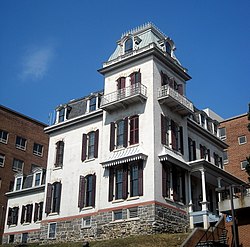
Massachusetts Avenue is a major diagonal transverse road in Washington, D.C., and the Massachusetts Avenue Historic District is a historic district that includes part of it.
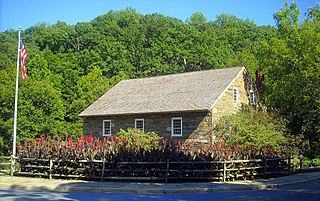
This is a list of properties and districts in Washington, D.C., on the National Register of Historic Places. There are more than 600 listings, including 74 National Historic Landmarks of the United States and another 13 places otherwise designated as historic sites of national importance by Congress or the President.

2000 Pennsylvania Avenue, formerly known as The Shops at 2000 Penn and Red Lion Row, is a shopping center and eight-story office complex located on Pennsylvania Avenue, NW in Washington, D.C. It forms a busy gateway into the main campus of the George Washington University, which owns the property. As the 2000 Block of Eye Street, NW, the houses were named a DC Landmark and added to the National Register of Historic Places, both in 1977.

The Grenville M. Dodge House is a historic house museum in Council Bluffs, Iowa, United States. This Second Empire mansion, built in 1869, was the home of Grenville M. Dodge (1831-1916), a Union Army general, politician, and a major figure in the development of the railroads across the American West. The house was declared a National Historic Landmark in 1961 for its association with Dodge; in 2005 it was included as a contributing property in the Willow-Bluff-3rd Street Historic District. It is now owned by the city of Council Bluffs and is open for tours.

The William P. Hepburn House is a historic house and National Historic Landmark in Clarinda, Iowa. It was home to United States Congressman William P. Hepburn (1833–1916) from about 1867 until his death. Hepburn most significantly introduced the Hepburn Act of 1906, which gave the Federal government the power to set railroad rates, and was an important precedent in Federal regulation of private industry. The house was declared a National Historic Landmark in 1976. It is a private residence, not generally open to the public.

The Cleveland Abbe House, also known as the Timothy Caldwell House and Monroe-Adams-Abbe House, is a historic house at 2017 "I" Street NW in Washington, D.C. Built in 1805, it is a good example of Federal period architecture, and has had a series of distinguished residents. Most notable are James Monroe, who occupied it as United States Secretary of War and as President of the United States while the White House was restored after the War of 1812, and historian Henry Adams. However, it was designated a National Historic Landmark in 1975 for its association with meteorologist Cleveland Abbe (1838–1916), the founder of the National Weather Service, who lived here from 1877 until his death. It is now home to the Arts Club of Washington.

The Herndon Home is a historic house museum and National Historic Landmark at 587 University Place NW, in Atlanta, Georgia. An elegant Classical Revival mansion with Beaux Arts influences, it was the home of Alonzo Franklin Herndon (1858-1927), a rags-to-riches success story who was born into slavery, but went on to become Atlanta's first black millionaire as founder and head of the Atlanta Life Insurance Company. The house was designed by his wife Adrienne, and was almost entirely built with African-American labor. The house was declared a National Historic Landmark in 2000, and had previously been declared a "landmark building exterior" by the city of Atlanta in 1989.
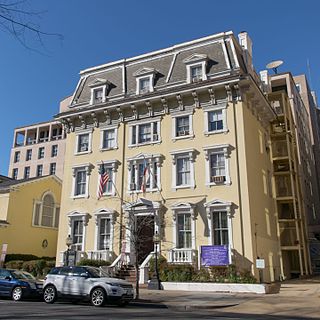
Ashburton House, also known as St. John's Church Parish House or the British Legation, is a historic house at 1525 H Street NW, on Lafayette Square in Washington, D.C. Built in 1836, it is notable as the residence of Lord Ashburton in 1842, during which time negotiations took place there culminating the Webster–Ashburton Treaty. This settled a long list of border disputes between the U.S. and the British provinces that are now Canada, and ended the Aroostook War. It was declared a National Historic Landmark in 1973. It presently serves as the parish house for St. John's Episcopal Church.

The Blanche K. Bruce House is a historic house at 909 M Street NW in Washington, D.C. Built in 1865, it was a home of slave-born Blanche K. Bruce, who was the first African-American to serve a full term in the U.S. Senate. It was declared a National Historic Landmark in 1975.
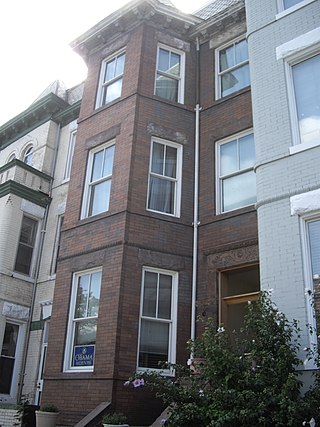
The Samuel Gompers House is a historic house at 2122 1st Street NW, in the Bloomingdale neighborhood of Washington, D.C. Built around the turn of the 20th century, it was from 1902 until 1917 home to Samuel Gompers (1850–1924), who was founder and president of the American Federation of Labor from 1886 until his death. It was declared a National Historic Landmark in 1974.
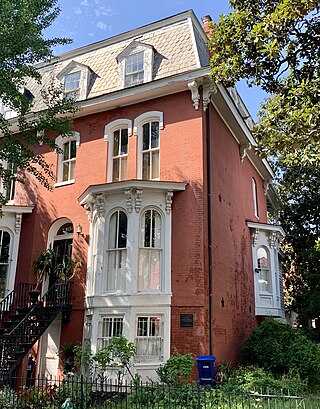
The Zalmon Richards House is a historic house in Washington, D.C. A Second Empire rowhouse, it was home from 1882 until his death of Zalmon Richards (1811–1899), founder of the National Education Association. It was declared a National Historic Landmark in 1965. It is a private residence.

The David White House is a historic house at 1459 Girard Street NW in Washington, D.C. A National Historic Landmark, it was the home of geologist David White (1862–1935) from 1910 to 1925. White had a longtime association with the United States Geological Survey (USGS), and performed groundbreaking research on peat and petroleum geology.

The Oscar W. Underwood House is a historic house located in the Foggy Bottom neighborhood Northwest, Washington, D.C. It is nationally significant for its association with Major Archibald Butt, and painter Francis Davis Millet – both of whom died in the Titanic disaster on April 15, 1912 – and also Alabama politician Oscar Underwood (1862–1929) who lived there 1914–1925. It was the first long-term home of the Washington College of Law, the nation's first law school founded and run by women. The property was declared a National Historic Landmark in 1976. The building presently houses a legal aid clinic operated by George Washington University.

The Mary Church Terrell House is a historic house at 326 T Street NW in Washington, D.C. It was a home of civil rights leader Mary Church Terrell (1863–1954), the first black woman to serve on an American school board, and a leading force in the desegregation of public accommodations in the nation's capital. Her home in the LeDroit Park section of Washington, DC was declared a National Historic Landmark in 1975. The building is a contributing property in the LeDroit Park Historic District.
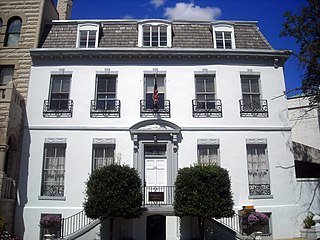
The Hiram W. Johnson House, also known as Mountjoy Bayly House, Chaplains Memorial Building or Parkington, is an historic house at 122 Maryland Avenue, Northeast, Washington, D.C., in the Capitol Hill neighborhood. Built about 1822, it is most notable as the home of Hiram Johnson (1866–1945), a prominent force in the Progressive Party of the early 20th century and its vice presidential candidate under Theodore Roosevelt in the 1912 election. It was declared a National Historic Landmark in 1976, and contributing property to the Capitol Hill Historic District.

The Yard is one of the main quadrangles on the campus of Howard University in Northwest Washington, DC. The Yard is the principal open space at the northern end of the academic portion of the campus, flanked by nine academic buildings. It is the site of a variety of campus gatherings, most notably for its annual Homecoming festivities, known as "Yardfest". The quadrangle and three buildings, Andrew Rankin Memorial Chapel, Frederick Douglass Memorial Hall, and Founders Library, are a listed National Historic Landmark, important for their role in the advancement of civil rights in education during the 20th century.
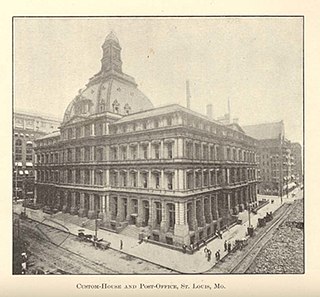
The U.S. Custom House and Post Office is a court house at 815 Olive Street in downtown St. Louis.
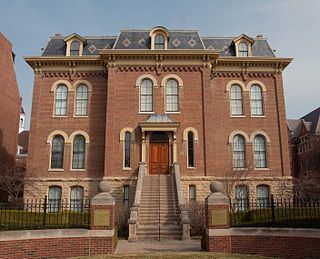
Harker Hall, also known as the Chemical Laboratory, is a historic building on the campus of the University of Illinois at Urbana–Champaign in Urbana, Illinois. Built in 1877, the building originally served as the university's chemical laboratory. Architect Nathan Clifford Ricker designed the Second Empire building, which originally featured a mansard roof. In 1896, a lightning strike set the roof on fire, and architect James White replaced it with a hip roof. The building was named Harker Hall in honor of Oliver A. Harker, who served as dean of the university's law school from 1903 to 1916. Until it stopped hosting classes, the hall was the oldest classroom building at the university.

College Hall is the central building of the campus of the Vermont College of Fine Arts in Montpelier, U.S. state of Vermont. Located prominently on Ridge Street atop Seminary Hill, this 1872 Second Empire building has been a major visual and architectural landmark in the city since its construction. It was listed on the National Register of Historic Places for its architectural significance in 1975.
